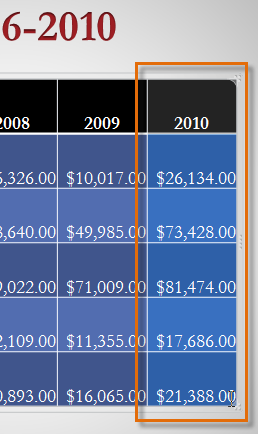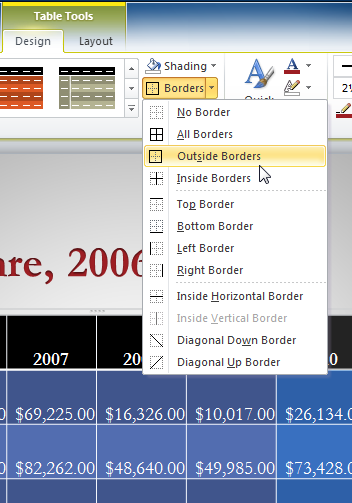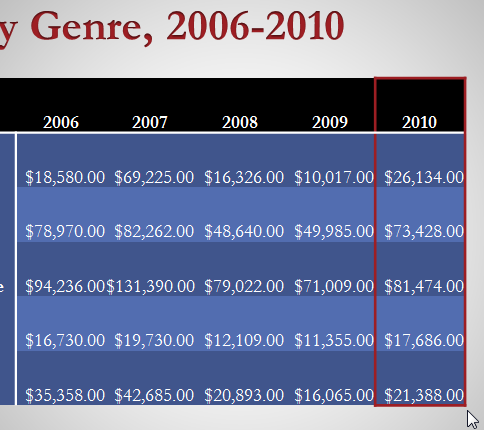Ask questions which are clear, concise and easy to understand.
Ask QuestionPosted by Aarya Sawant 4 years, 11 months ago
- 0 answers
Posted by Somya Jain 4 years, 11 months ago
- 3 answers
Amrita Singh Goodit 4 years, 11 months ago
Yogita Ingle 4 years, 11 months ago
1. Click the Start button to open the Start menu
2.Click on the Find option, then click on Find Files or folders.
3. In the named box, type *.tmp to search for any files with a "tmp" file extension.
4. Verify that the Look in section of the search box is pointing to the C: drive and not document folders.
5. Click the Find Now button to start the search.
6. Delete all files that are found.
Posted by Uday Patil 4 years, 11 months ago
- 5 answers
Gaurav Seth 4 years, 11 months ago
RAM—Random Access Memory: As the name suggests, any data from any location in RAM can be accessed at any time. The time taken to access any location is the same. RAM is read/write memory. We can read data from RAM and we can write data on RAM.
Posted by Kulveer Singh 4 years, 11 months ago
- 1 answers
Yogita Ingle 4 years, 11 months ago
To add borders to a table:
- Select the cells you want to add a border to.

- From the Table Tools Design tab, select the desired Line Style, Line Weight, and Pen Color.

- Click the Borders drop-down arrow.
- From the drop-down menu, select the desired border type.

- The border will be added to the selected cells.

Posted by Kashish Sharma 4 years, 11 months ago
- 1 answers
Gaurav Seth 4 years, 11 months ago
Answer: Google is one kind of search engine
Extra information
The purpose of a search engine is to extract requested information from the huge database of resources available on the internet. Search engines become an important day to day tool for finding the required information without knowing where exactly it is stored.
Posted by Palak Bhansali 4 years, 11 months ago
- 2 answers
Gaurav Seth 4 years, 11 months ago
A graph is a pictorial representation of a set of objects where some pairs of objects are connected by links. The interconnected objects are represented by points termed as vertices, and the links that connect the vertices are called edges.
Posted by Sumit Rathore 4 years, 11 months ago
- 0 answers
Posted by Ritik Sharma Kaushik 4 years, 11 months ago
- 1 answers
Posted by Heet Patel 4 years, 11 months ago
- 1 answers
Anushka Khunteta 4 years, 11 months ago
Posted by Aaliya Dhawan 4 years, 11 months ago
- 1 answers
Posted by Shubham Kumar Chaudhary 4 years, 11 months ago
- 1 answers
Posted by Muskan Singh 4 years, 11 months ago
- 0 answers
Posted by Dev Panwar 4 years, 11 months ago
- 2 answers
Gaurav Seth 4 years, 11 months ago
Press F5 to start the presentation from the beginning.
Other shortcuts
<th>|
Start a presentation from the beginning. |
F5 |
|
Start a presentation from the current slide. |
Shift+F5 |
|
Start the presentation in Presenter View. |
Alt+F5 PowerPoint 2010 and 2007: Not available |
|
Perform the next animation or advance to the next slide. |
N Enter Page Down Right arrow key Down arrow key Spacebar |
|
Perform the previous animation or return to the previous slide. |
P Page Up Left arrow key Up arrow key Backspace |
|
Hide the pointer and navigation buttons. |
Ctrl+H |
Posted by Nikita Singh 4 years, 11 months ago
- 3 answers
Gunjan Tomar 4 years, 11 months ago
Yogita Ingle 4 years, 11 months ago
To start a mail merge, choose Tools | Letters and Mailings | Mail Merge Wizard to open the Mail Merge task pane.
Step 1: Select a Document Type The first step is to select what Word calls a “document type” in the Mail Merge task pane, what kind of mail-merge you want to undertake: form letters, e-mail messages, envelopes for mass-mailings, labels for mass-mailings, or a directory (a list or catalog). Choose an option button and click Next at the bottom of the task pane to go to step 2.
Step 2: Select a Starting Document What Word calls the “starting document” is the document in which the merging takes place. In other words, the address or other data you retrieve will land in the document you choose or create now. You can create a new start document or use an existing one. In the case of labels and envelopes, you tell Word what size labels or envelopes you intend to print on. In the case of form letters, e-mail messages, and directories, you supply the text either by making use of a document you’ve written already or writing a new document.
Step 3: Select Recipients In step 3, you tell Word where to get the data that you will merge into the starting document you created or supplied in step 2. You can retrieve the data from a table in a Word document, an Access database table or query, or the address book or contact list where you store your addresses. You can also create a new list for the data if you haven’t entered the data in a file yet. Step 4: Write/Arrange Your Document In step
4, you insert the merge fields, the parts of the starting document that differ from recipient to recipient. By inserting merge fields, you tell Word where to plug information from the data source into the starting document. You also tell Word which data to take from the data source. Word offers special tools for entering an address block – the recipient’s address, including his or her name, company, title, street address, city, and zip code.
Step 5: Preview Your Document In step 5, you get a chance to see what your form letters, e-mail messages, envelopes, labels, or directory will look like after they are printed or sent. In this step, you find out what the document will look like when real data is plugged into it.
If something is amiss in the document, you can click the Previous link to return to step 4, the Write/Arrange your document task pane, and make changes there.
Step 6: Complete the Merge Step 6 is where you complete the merge by either printing a new document or saving the new file and printing it later. By saving the merged data in a new file, you can edit the file before printing it. In the case of e-mail messages, you click the Electronic Mail link to tell Word to send the e-mail messages.
Posted by Saroj Pandit 4 years, 11 months ago
- 2 answers
Posted by Aradhana Upadhyay 4 years, 11 months ago
- 0 answers
Posted by Mannatpreet Kaur 4 years, 7 months ago
- 1 answers
Sia ? 4 years, 7 months ago
Posted by Yatharth . 4 years, 11 months ago
- 3 answers
Tanush Batra 4 years, 11 months ago
Yogita Ingle 4 years, 11 months ago
A computer virus is a kind of malicious computer program, which when executed, replicates itself and inserts its own code. When the replication is done, this code infects the other files and program present on your system.
Posted by Shreyash Ekal 4 years, 11 months ago
- 1 answers
Posted by Chahat Pandit 4 years, 11 months ago
- 0 answers
Posted by Abhishek Gamer 4 years, 11 months ago
- 4 answers
Gaurav Seth 4 years, 11 months ago
Motion tween
Motion tween is a type of animation that uses symbols to create movement, size and rotation changes, fades, and color effects. Classic tween refers to tweening in Flash CS3 and earlier, and is maintained in Animate primarily for transition purposes.
Posted by Grick Sudrania 4 years, 11 months ago
- 0 answers
Posted by Grick Sudrania 4 years, 11 months ago
- 0 answers
Posted by Grick Sudrania 4 years, 11 months ago
- 1 answers
Gaurav Seth 4 years, 11 months ago
A n s w e r : Entrance effects is used to make an object fade gradually into focus .
Entrance effects make an object fade gradually into focus, fly onto the slide from an edge, or bounce into view.
Posted by Manisha Babbar 4 years, 11 months ago
- 0 answers
Posted by Ekam Brar 4 years, 11 months ago
- 2 answers
Posted by Manav Malhotra 4 years, 11 months ago
- 4 answers
Yogita Ingle 4 years, 11 months ago
Clear button is used in editing group to remove or clear all the text in the required format. It helps us to clear or remove data which we entered in group or file. In order to clear all the data, formats and content, we click the “Clear all” button.
Swayam Sandeep Parida 4 years, 11 months ago
Posted by Samriddhi Singh 4 years, 11 months ago
- 0 answers
Posted by Aditi Kumari 4 years, 11 months ago
- 1 answers

myCBSEguide
Trusted by 1 Crore+ Students

Test Generator
Create papers online. It's FREE.

CUET Mock Tests
75,000+ questions to practice only on myCBSEguide app
 myCBSEguide
myCBSEguide